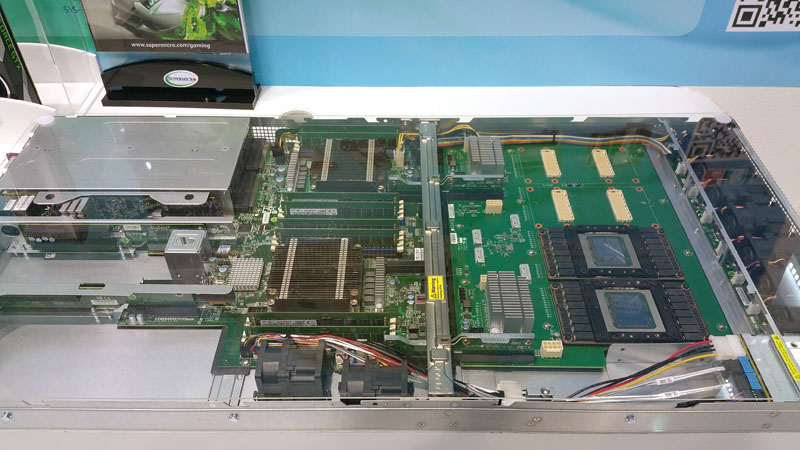Today I was able to do a brief tour of the Supermicro booth at Computex 2016. At STH we do review quite a number of Supermicro products but there were a few extraordinary items that I wanted to share briefly. There were many cool systems including blade chassis, Xeon E7 systems, MicroBlade chassis and etc, but we wanted to focus on some new and upcoming items in this piece.
Supermicro 1U server with Pascal and NVLink
One of the first items to catch my eye was a 1U server with NVIDIA Pascal GPUs and NVLink. The Supermicro SYS-1028GQ-TXR(T) was a notable server.
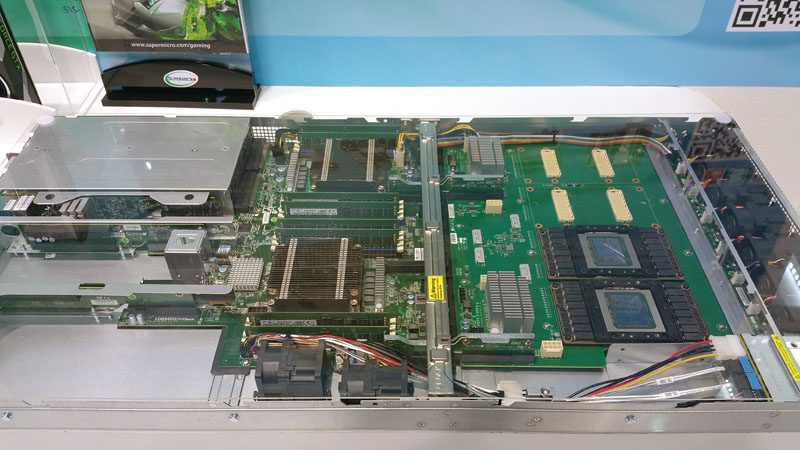
Some of the key features:
- Dual Intel Xeon E5-2600 V4 CPUs
- 16x DIMMs (8x per CPU)
- 4x NVLink spots for NVIDIA Pascal GPUs
- 4x 2.5″ SATA (2x hot swap and 2x internal)
- 10GbE networking
- Redundant 2kW PSUs
- PCIe riser cards for additional expansion
If you were looking for a DGX-1 alternative, this is certainly interesting. It provides 50% more GPUs per U than the NVIDIA DGX-1 excluding anything used in the PCIe slots. With the ability to use lower cost CPUs, more RAM and other options, it may end up being significantly more cost effective as well.
Supermicro HA Short Depth 1U Appliance Solution
A very popular setup these days is to use two side-by-side appliances in a HA configuration using only a single U of space. We are seeing many vendors offer platforms in this form factor. For quite some time, I have been a vocal proponent that Supermicro should make an appliance or chassis for this application. A good reason would be for making HA firewall appliances out of Xeon D systems. At Computex 2016, Supermicro showed a product meeting this description. I will note, I have heard rumors that this was finally going to be made several weeks in advance but this was my first time to see the setup.
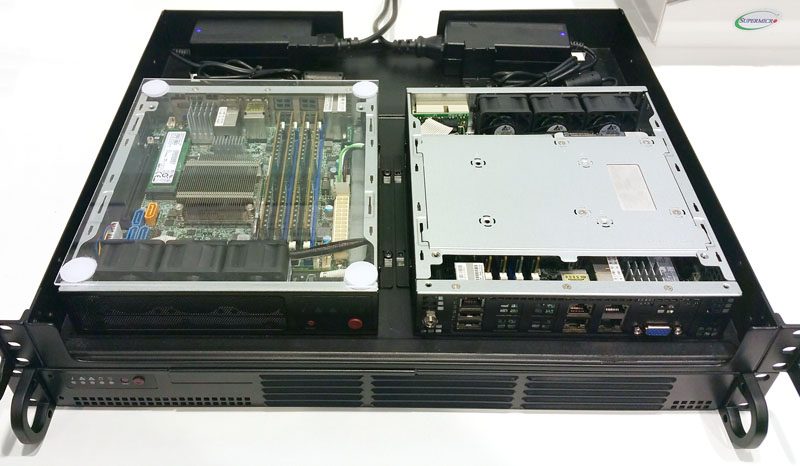
What the setup consists of:
- 1x 1U short depth shelf with two external power supplies
- 2x mITX chassis each with 3x fans, a 2x 2.5″ drive mounting plate and a DC power supply input
- In each of the mITX platforms there are Xeon D systems (X10SDV motherboards pictures and it looks like other options may be supported.)
This setup allows one to fit two HA network appliances in 1U. For space constrained installations (e.g. 1/4 cabinet deployments or even 1U or 2U colocation) this allows two appliances to be installed in a single U. With the Xeon D platforms shown, one can use 10Gbase-T and 1Gbase-T for LAN/ WAN/ heartbeat connections while still having two SSDs, a SATA DOM and a m.2 SSD installed. When we did the initial STH colocation build, and our 2014 update, we used two short depth 1U mITX appliances (Rangeley based) for HA pfSense firewalls. If these had been available, we likely would have used this HA setup instead.
Supermicro also showed off a slightly larger node with 10x 1GbE ports and 2x 10Gb SFP+ ports. This would make a very compact network appliance.
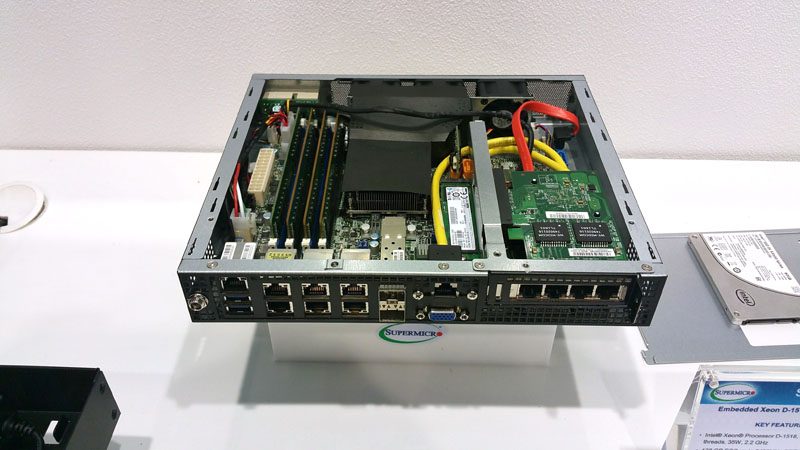
On the show floor we were not able to power the systems up and check for noise. The prospect of such a network box is tantalizing. The system shown has 4x 1GbE ports however it is a low profile PCIe slot with a fan to cool the add-in card opening possibilities to additional network configurations.
We look forward to giving these units a try in our colocation lab.
Updated Supermicro Switches
Supermicro appears to have updated their switch line to include new higher-performance models with a focus on Cumulus Networks compatibility.
The first switch we saw was a 48x 10Gb SFP+ and 6x 40Gb QSFP+ Ethernet switch called the SSE-X3648S/R. This switch is roughly equivalent to the bare metal switch version of our lab’s QCT SFP+ switch that we have been using. We heard that Supermicro updated their switches but this was the first time we had seen one in person.
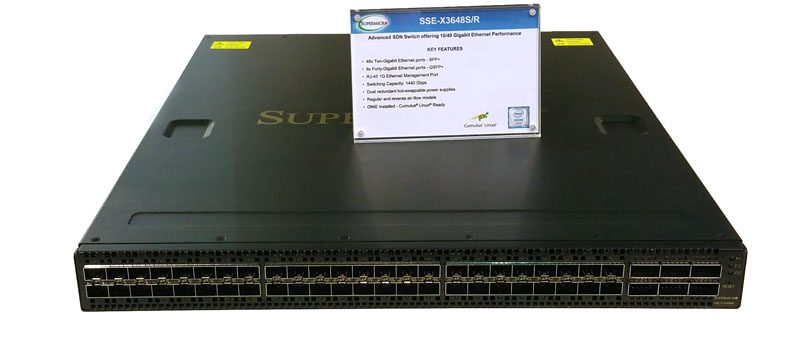
The Supermicro SSE-C3632SR is a 32x 100Gb / 40Gb Ethernet switch that we were really surprised to see at the Supermicro booth. The switch is based on the Broadcom Tomahawk and an Intel Rangeley CPU for the control plane. It is a bare metal ONIE switch that is Cumulus Linux compatible.
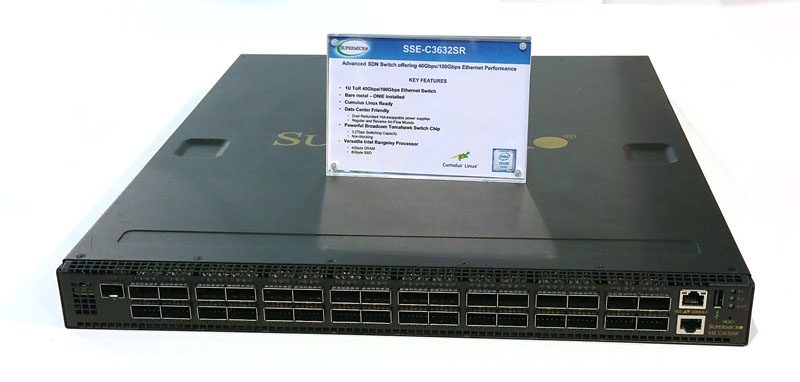
This move to providing modern Cumulus Networks solutions by Supermicro is an interesting one. We did not hear how much Supermicro would be bundling Cumulus licenses for.
We also got to see on Intel Omni-Path switch in person twice today. The first one was off the show floor during a production line visit. That one had its top off but we were not allowed to take pictures where we were. In the Supermicro booth on the show floor we saw a OPA switch:
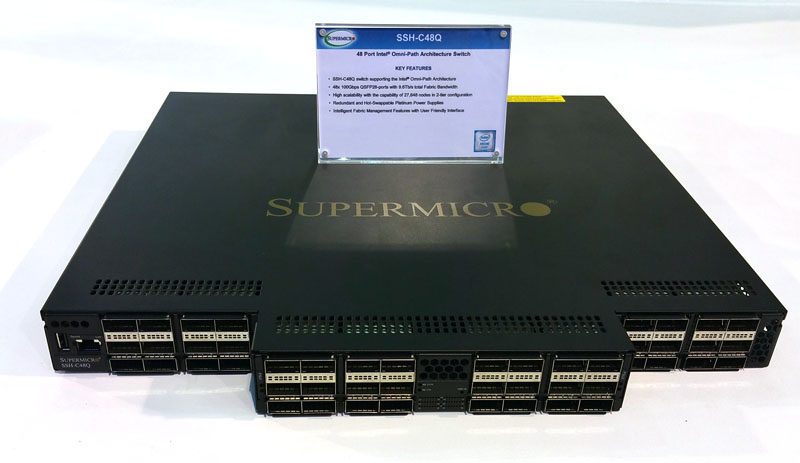
Overall, it is good to see that Supermicro updated its networking profile. I am seeing the need to get in-touch with Cumulus Networks as they are gaining momentum.
Supermicro X11SSV-M4 Skylake-H Platform
One interesting motherboard we saw was the new Supermicro X11SSV-M4. It uses an unspecified Intel Xeon E3-1500 V5 CPU and supports AMT vPro, Intel Iris Pro graphics and quad 1GbE LAN.
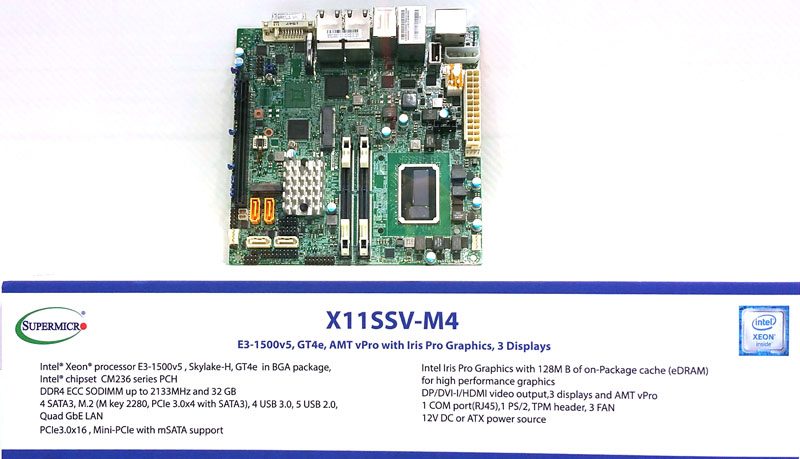
We hope to get more details on the platform in the coming weeks as we are very excited for GVT-g support.
Final Words
I did not get to spend too much time at the Supermicro booth at Computex 2016. I did get to speak with their head of blade systems, Raphael Wong, about the future of those platforms. We will have the Supermicro MicroBlade review soon but it was nice to get context around the blade ecosystem and future direction.
Overall, there were a number of new items that we saw at the Supermicro booth that STH readers will be interested in.

